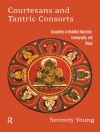The book attempts to provide an introduction to quantum field theory emphasizing conceptual issues frequently neglected in more "utilitarian" treatments of the subject. The book is divided into four parts, entitled respectively "Origins", "Dynamics", "Symmetries", and "Scales". The emphasis is conceptual – the aim is to build the theory up systematically from some clearly stated foundational concepts – and therefore to a large extent anti-historical, but twohistorical Chapters ("Origins") are included to situate quantum field theory in the larger context of modern physical theories. The three remaining sections of the book follow a step by step reconstruction of this framework beginning with just a few basic assumptions: relativistic invariance, the basicprinciples of quantum mechanics, and the prohibition of physical action at a distance embodied in the clustering principle. The "Dynamics" section of the book lays out the basic structure of quantum field theory arising from the sequential insertion of quantum-mechanical, relativistic and locality constraints. The central role of symmetries in relativistic quantum field theories is explored in the third section of the book, while in the final section, entitled "Scales", we explore in detail thefeature of quantum field theories most critical for their enormous phenomenological success – the scale separation property embodied by the renormalization group properties of a theory defined by an effective local Lagrangian.
Anthony Duncan
CONCEPT FRAMEWORK QUANTUM FIELD THEORY C [PDF ebook]
CONCEPT FRAMEWORK QUANTUM FIELD THEORY C [PDF ebook]
Buy this ebook and get 1 more FREE!
Language English ● Format PDF ● ISBN 9780191642203 ● Publisher OUP Oxford ● Published 2012 ● Downloadable 6 times ● Currency EUR ● ID 2505816 ● Copy protection Adobe DRM
Requires a DRM capable ebook reader












